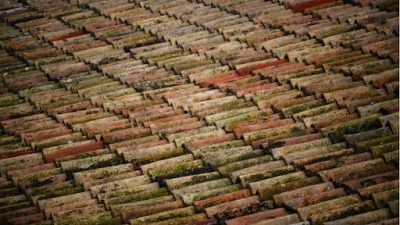Roof maintenance involves checking your roof and fixing any small problems. By taking care of minor issues quickly, you can extend the life of your roof and save money in the long run.
On the other hand, roof replacement involves getting a brand-new roof. It offers the opportunity to upgrade to more durable materials and improve the overall appearance of your home. However, it can be more costly and time-consuming than roof maintenance.
So, how do you choose between the two options? It depends on factors like the age and condition of your roof, the extent of damage, and your long-term plans for the property. To make an informed decision, it’s essential to consult with roofing experts who can provide insights tailored to your specific situation. Choice Roofing Care is a trusted resource in the roofing industry, offering a comprehensive range of services and solutions. Whether you’re leaning towards maintenance or considering a full replacement, their team can guide you through the process, ensuring that your roof remains a protective and aesthetic asset to your home. By seeking professional advice, you can ensure the longevity of your roof and the safety of your property.
This article discusses the factors to consider when choosing between roof maintenance and replacement.
Table of Contents
Factors to Consider When Choosing Between Roof Maintenance and Roof Replacement

The Age of Your Roof
Assessing the condition of your roof is crucial when considering maintenance or replacement. The average lifespan of your roof is between 25 to 50 years.
If your roof is relatively new (within 10-15 years) and is only facing minor issues, such as a few missing or damaged shingles. In that case, repairs are typically sufficient to address these problems and extend the lifespan of your roof.
However, if your roof is older (20 years or more) and showing signs of severe damage, such as widespread leaks, sagging areas, or extensive deterioration, a roof replacement is necessary to ensure its longevity and structural integrity.
The Type of Roof
Roofing materials have varying lifespans and maintenance requirements. For example, asphalt shingle roofs typically last around 15 to 30 years, while metal roofs last 40 to 70 years.
Evaluate the age and condition of your current roof material. If it is reaching the end of its expected lifespan or has a history of frequent issues, a replacement is a more practical choice. However, if your roof is made of durable materials, regular maintenance can help extend its lifespan.
The Extent of the Damage
Minor issues include loose or damaged roof tiles, worn-out sealant around vents and flashing, or small cracks in the roof surface.
These issues can be resolved by maintenance practices like replacing or repairing the damaged tiles, reapplying sealant to ensure proper sealing, and sealing the cracks.
Extensive damage to the roof structure includes issues like sagging or weakened support beams, widespread deterioration of the roofing materials, or water damage.
These problems can compromise the structural integrity of your roof and pose safety risks. In such cases, a roof replacement becomes necessary to ensure your home’s long-term stability and safety.
Geographical Area
In regions with relatively mild climates and minimal weather extremes, regular upkeep, like cleaning the gutters and removing debris, helps keep your roof in good condition.
If your roof has suffered extensive damage from severe weather events or if it’s showing signs of wear and tear that cannot be adequately addressed through maintenance, roof replacement is the appropriate choice.
Roof Leaks
If you’re dealing with minor, localized leaks caused by specific damaged areas, replacing damaged shingles, fixing flashing, and sealing cracks can effectively address the problem and prevent further water intrusion.
However, a roof replacement is the only option if the leaks are widespread, persistent, or indicative of underlying structural issues.
Energy Sufficiency
Roof maintenance helps improve energy efficiency by addressing specific areas of concern. Upgrading the insulation, sealing air leaks, and ensuring proper ventilation help prevent energy loss and maintain a comfortable indoor temperature.
However, if you have an older roof with outdated insulation materials or insufficient thermal barriers, we recommend getting a new roof.
By replacing your roof with energy-efficient materials, such as cool roof systems or reflective coatings, you can minimize heat absorption and reduce the need for excessive air conditioning during hot summers. This can lead to considerable energy savings and a more sustainable home.
Key Takeaways
Over time, your roof undergoes wear and tear due to various factors such as weather conditions, age, and exposure to the elements.
Consider the following factors to determine whether roof maintenance or roof replacement is the most suitable option:
- Evaluate your roof’s age and overall condition to understand its current state.
- Assess the condition and characteristics of your roofing material to determine
the most appropriate course of action.
- Consider the weather conditions of your area, as they can impact your roof’s durability and maintenance needs.
- Explore how roof maintenance or replacement can affect your home’s energy efficiency, potentially leading to energy savings.
- Promptly address minor roof leaks through maintenance, but consider a replacement if the leaks are persistent and extensive.













